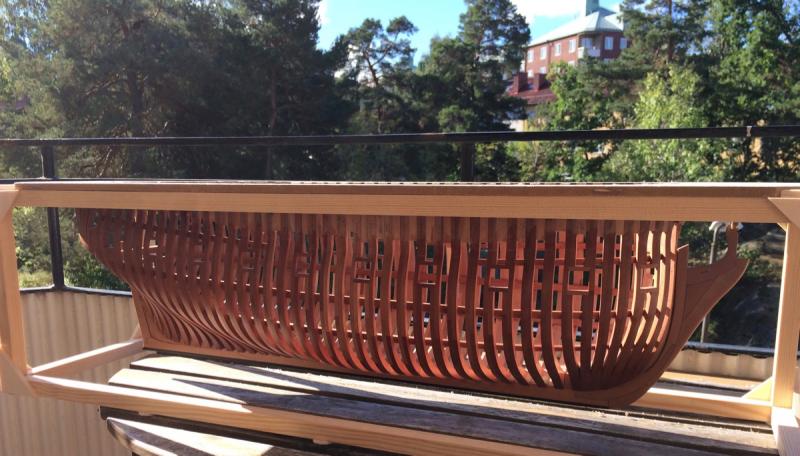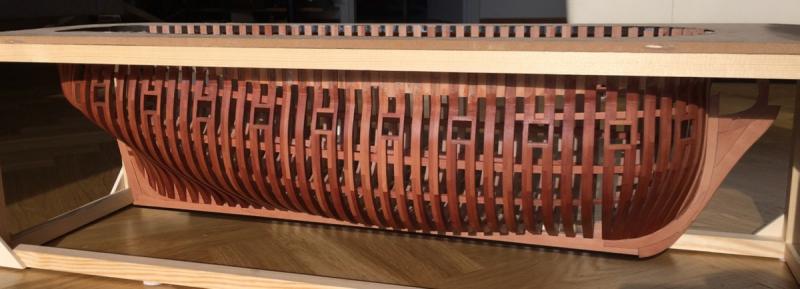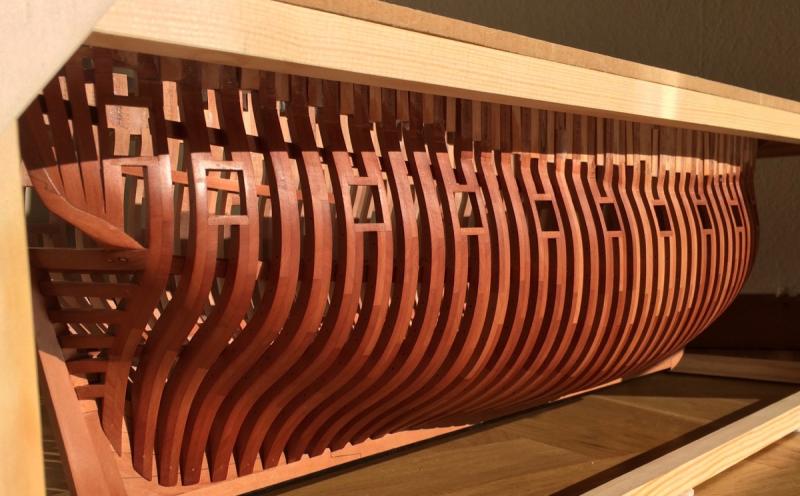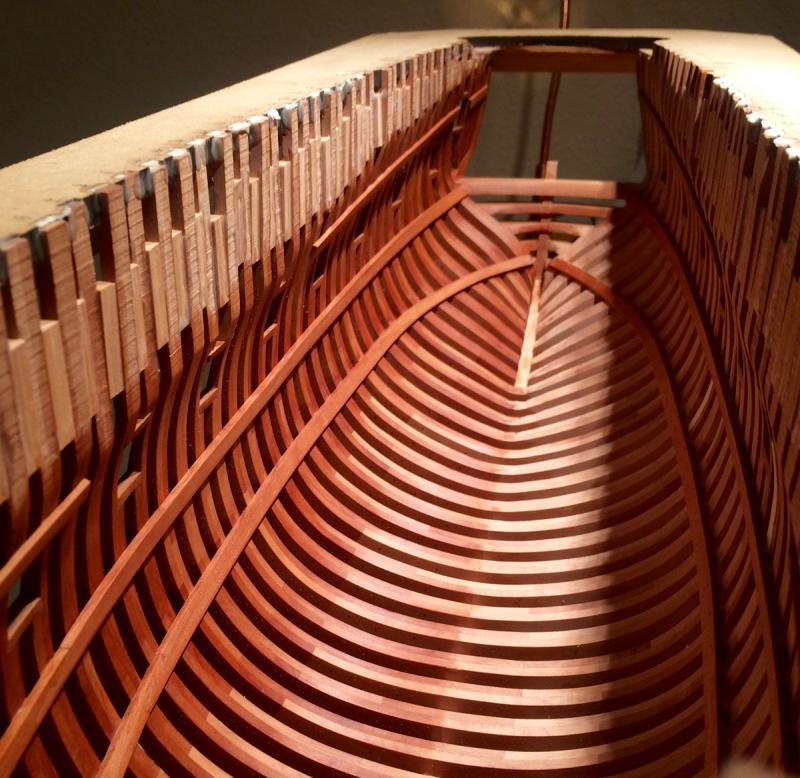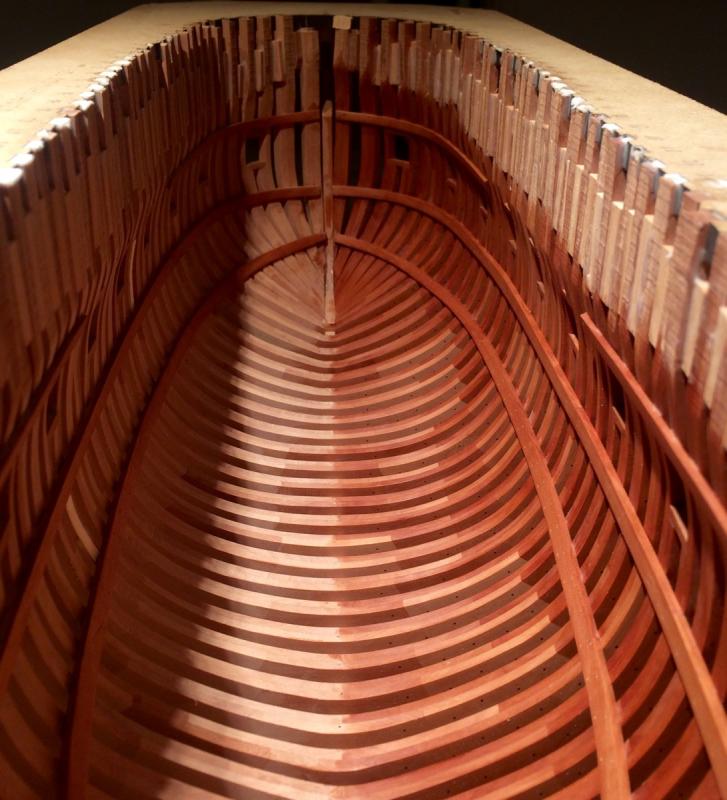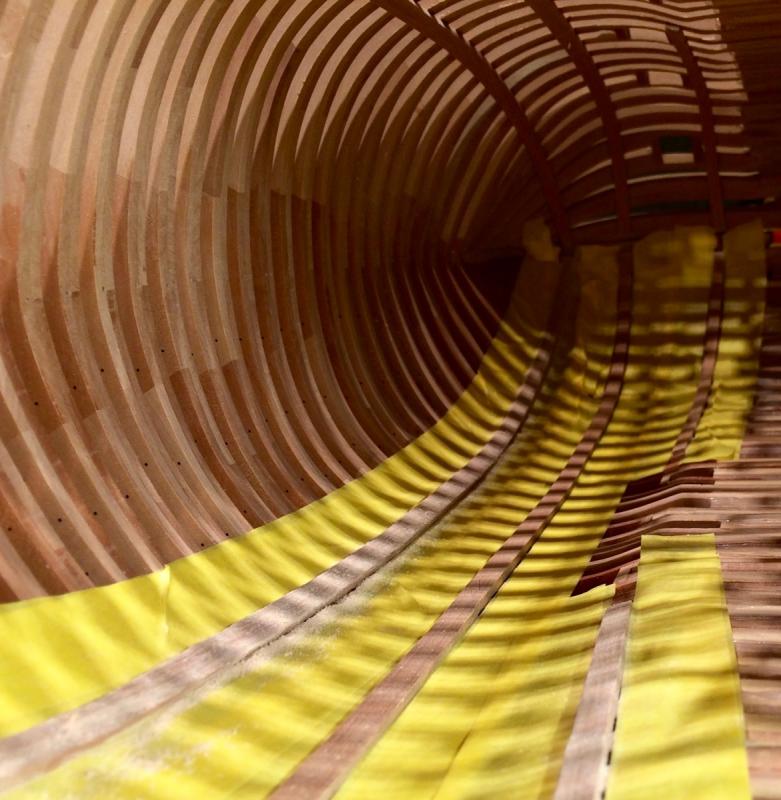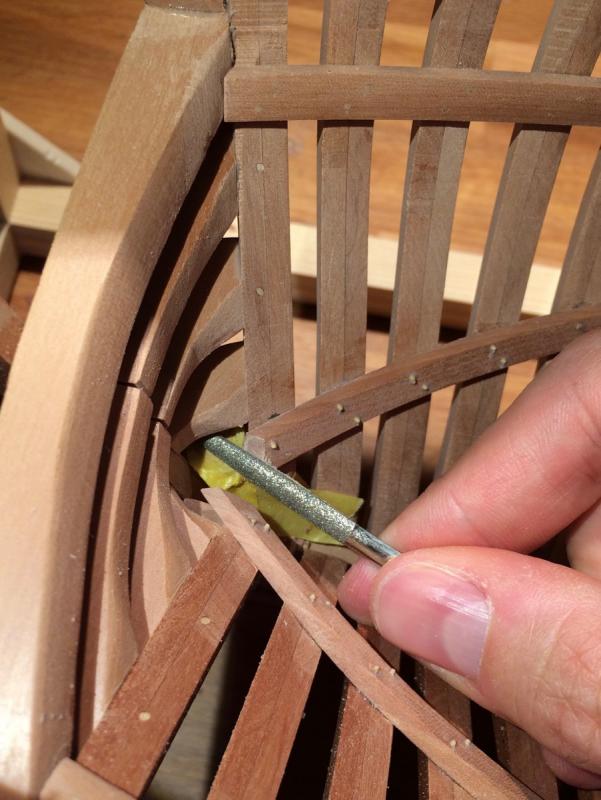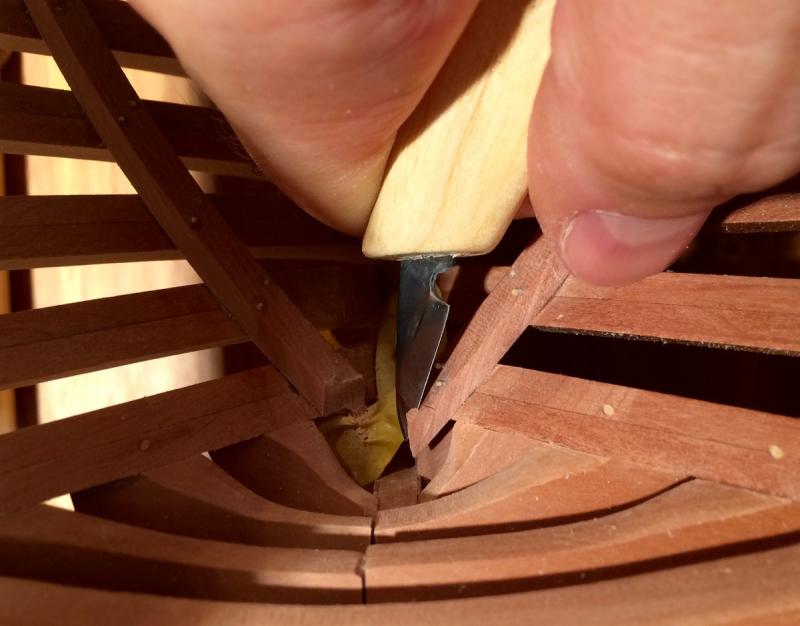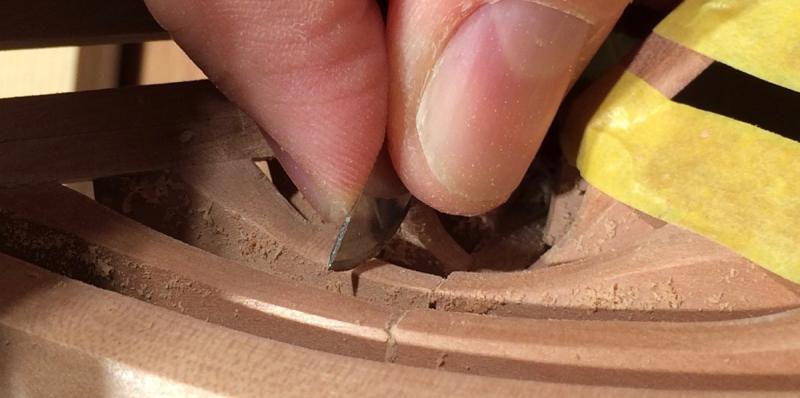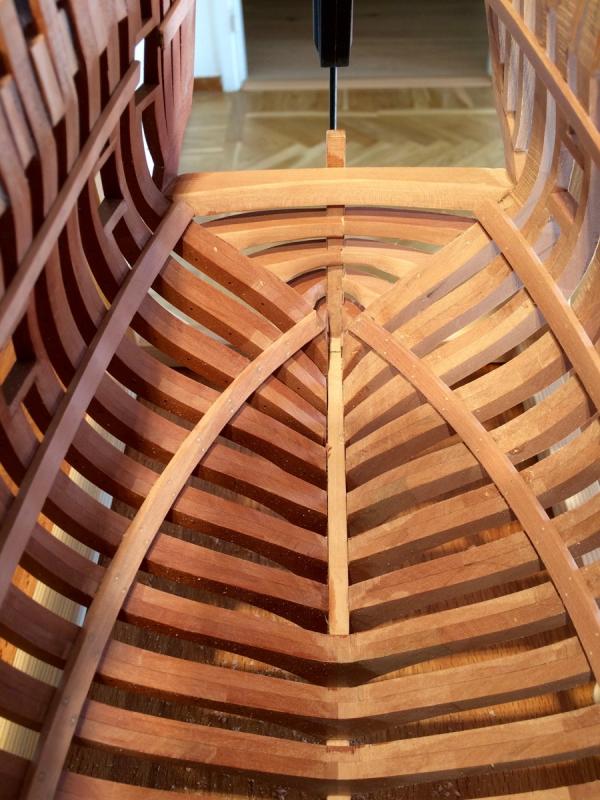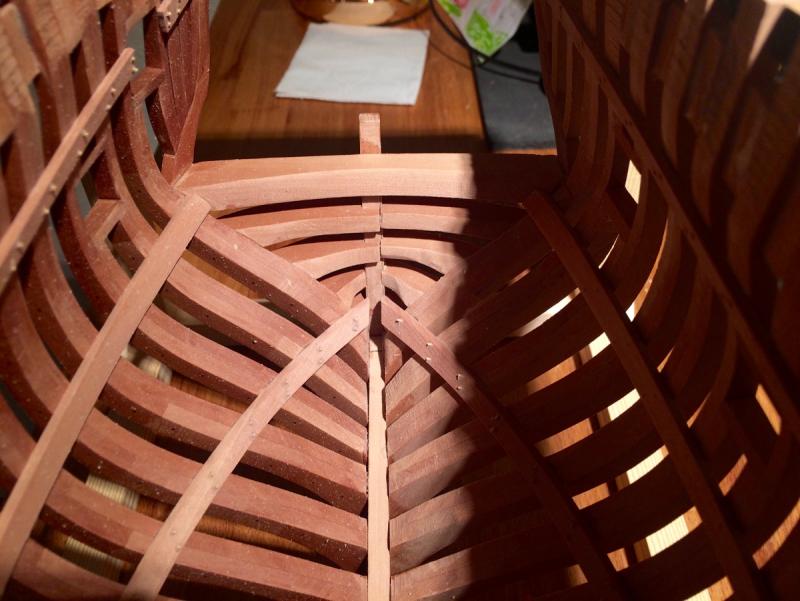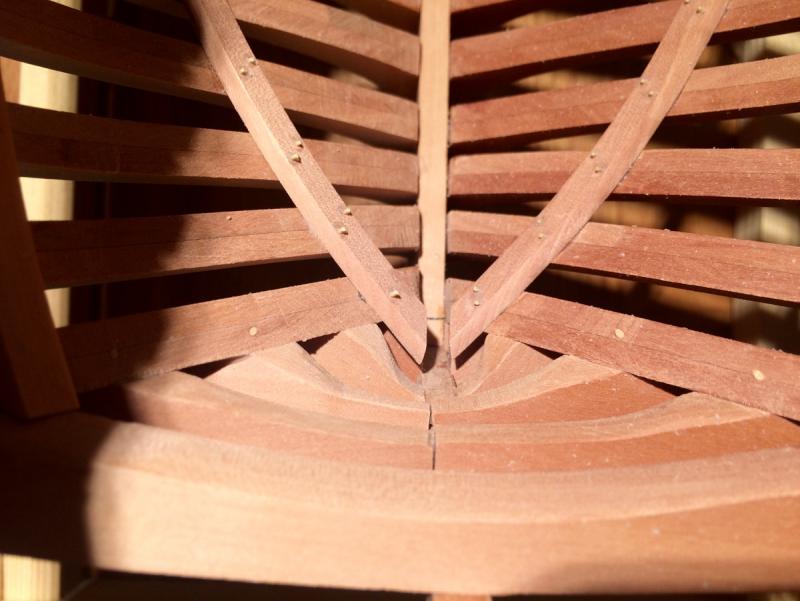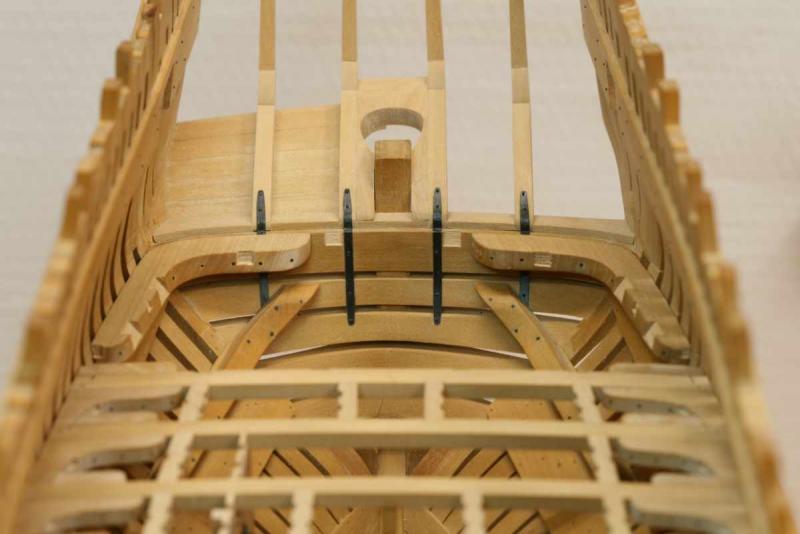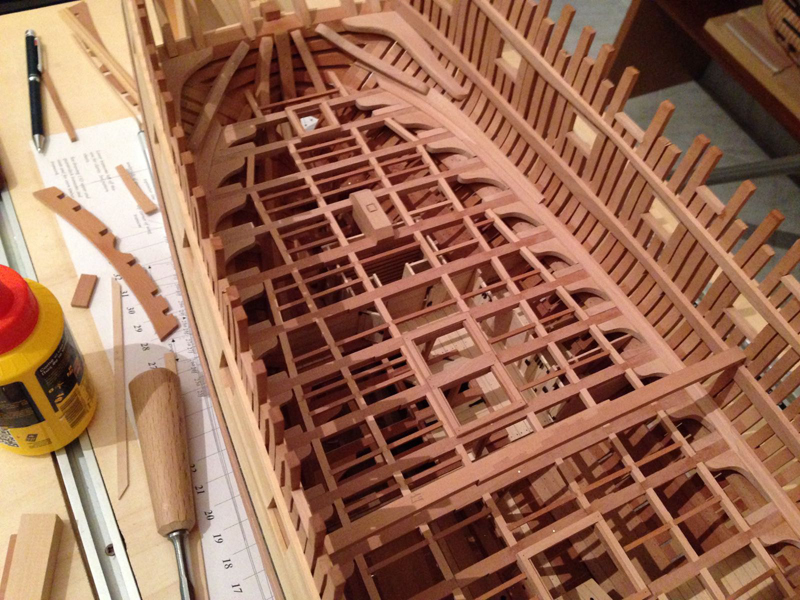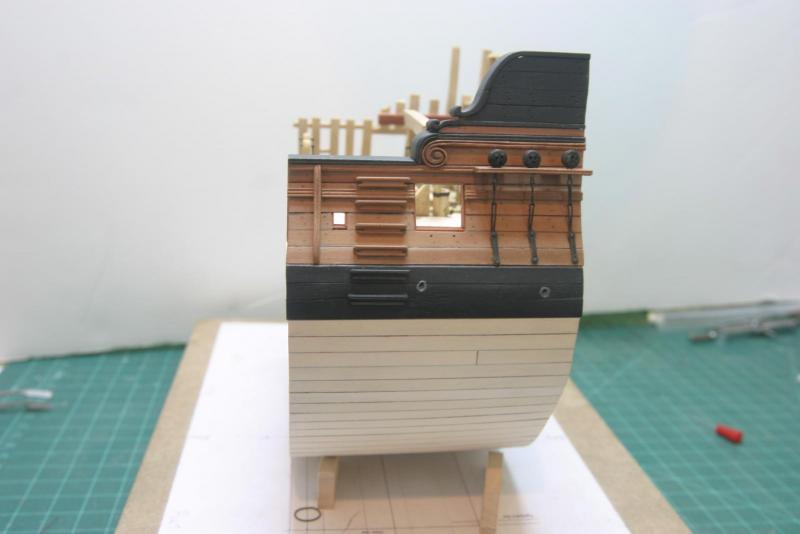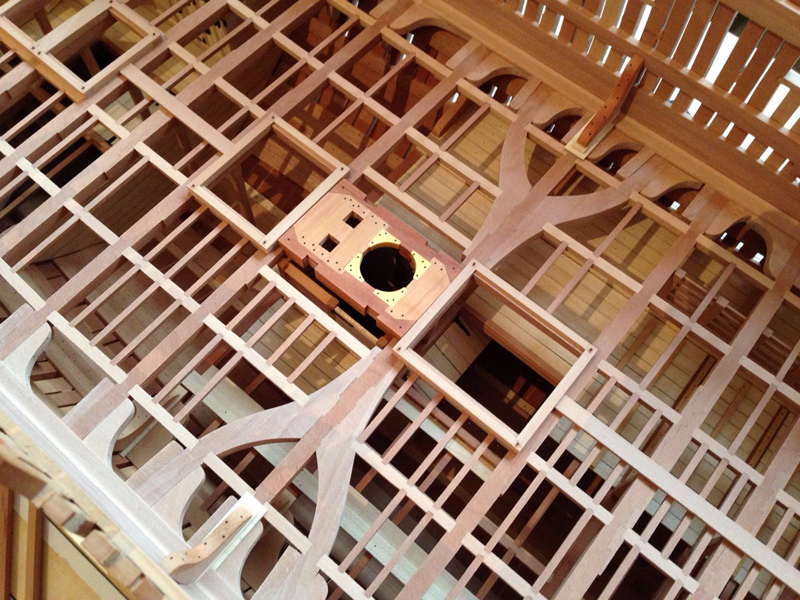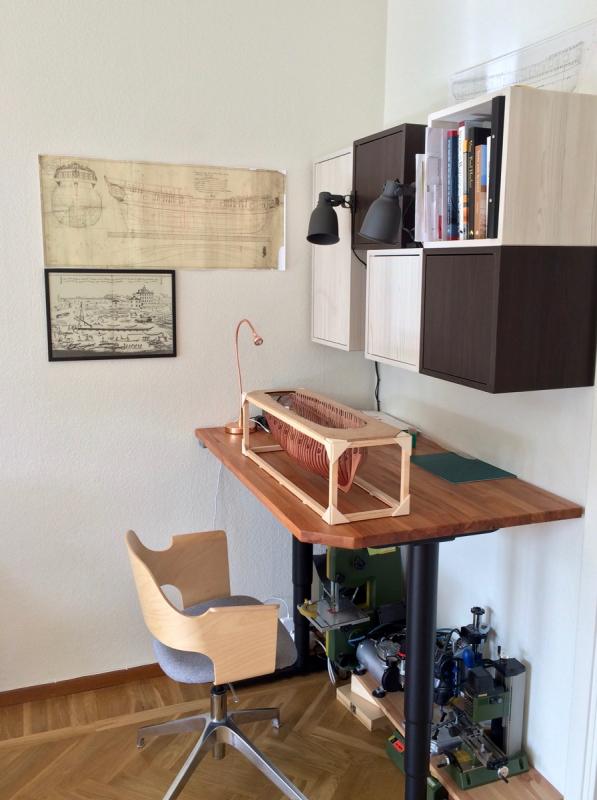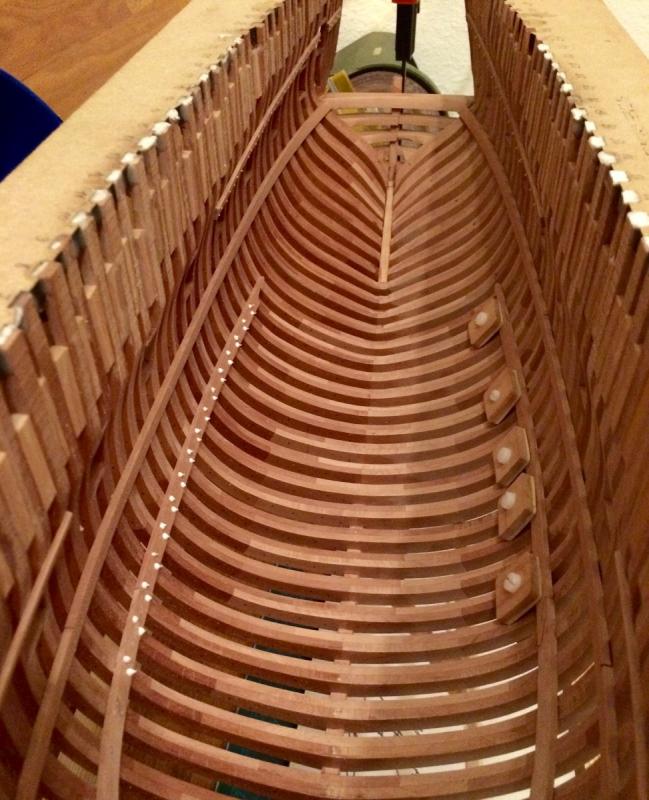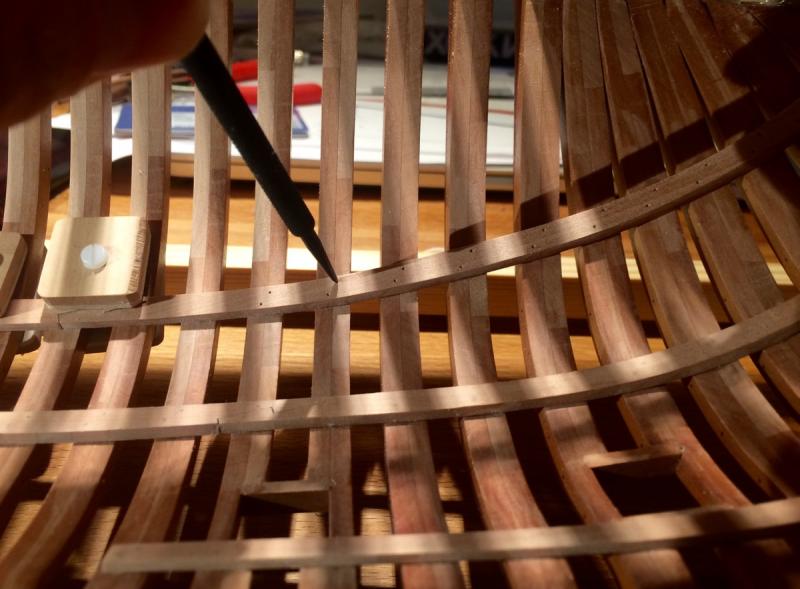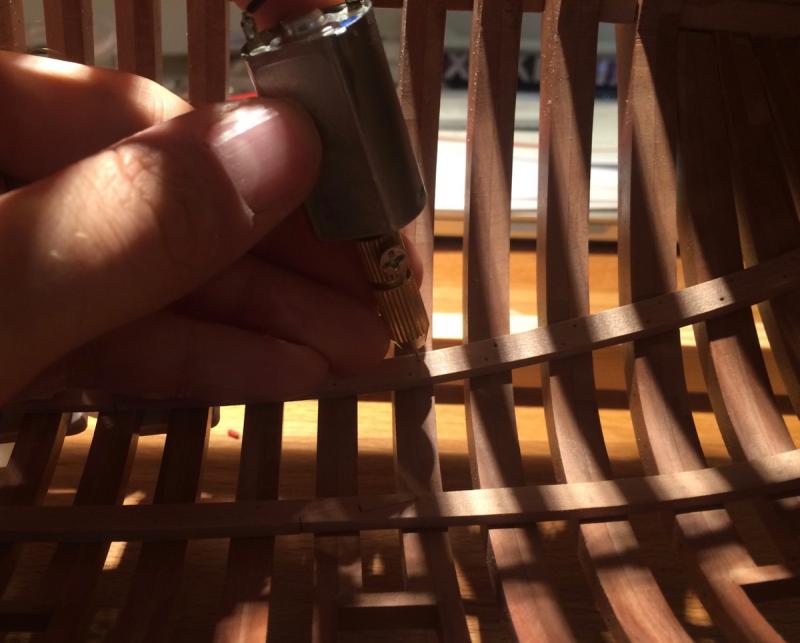-
Posts
1,546 -
Joined
-
Last visited
Content Type
Profiles
Forums
Gallery
Events
Everything posted by Mike Y
-
Few cents: I am not sure if simplification is a part of the style (except framing). I thought it is more of "let's leave some details up to the builder". Bill, here is a link to the Oliver Cromwell plans preview from Lumberyard website (the preview is distorted and not suitavle for building, you need to purchase real plans to build): http://www.dlumberyard.com/Plans/cromwell.pdf As you can see, some things are simplified. Like Mark mentolned - knees, carlings, deadwood, stem, stern, But nothing stops the builder from reading up and making a correct version instead of simplified one, like I did. It will not change the "style". However if you change the framing style - it would not be a Hahn style anymore. But it is really a fuzzy term. Hahn was "anti-purist", so hope he would not mind people deviating from his plans even if building from them
- 968 replies
-
- hahn
- oliver cromwell
-
(and 1 more)
Tagged with:
-
Bill, I do not think this term is clearly defined, but it is typically equally spaced frames with no shifts. Also, he popularised the jig that helps to build the hull upside-down, as you see in the beginning of the log.
- 968 replies
-
- hahn
- oliver cromwell
-
(and 1 more)
Tagged with:
-
Some "build snapshot" photos. Tung oil finish is especially beautiful under direct sunlight. It is such a pity that it is a not a good idea to display the model in the sunny place Damn physics!
- 968 replies
-
- hahn
- oliver cromwell
-
(and 1 more)
Tagged with:
-
Fingers crossed for you, Danny. Stay strong and win!
- 268 replies
-
Hi John, Thanks! The scrapers are amazing, I am using them very often now. They are removing much more material than xacto blades, and they can get into any small places because of the small size. The edge do not have any dents. Bought them here: http://www.axminster.co.uk/lynx-mini-cabinet-scraper-set-504698 I also discovered them on MSW in somebody's build log, but forgot who that was... Quick googling shows that you can buy them in US, for example, here: http://www.woodcraft.com/product/158977/lynx-mini-scraper-set-4pc.aspx http://www.grizzly.com/products/Lynx-Mini-Scraper-Set/T26658?utm_campaign=zPage http://www.japanwoodworker.com/Product/158977/Lynx-Mini-Scraper-Set-4pc.aspx etc etc
- 968 replies
-
- hahn
- oliver cromwell
-
(and 1 more)
Tagged with:
-
Or the plug is single-use and would be cut into pieces like frame centers in Chuck's longboat? Very impressive fairing and keel slot. Looks so accurate as it is milled on the completed hull. Incredible precision!
-
They are not perfectly symmetrical where the bending is significant (+/- 1mm, not more), but this would not be visible if I manage to make nice and even deck framing, perfectly aligned in all projections (because the deck beams are higher than deck clamps, recessed by roughly 1 inch). How hard could it be, right?
- 968 replies
-
- hahn
- oliver cromwell
-
(and 1 more)
Tagged with:
-
Hm! Amazing bending, will try that as well. Maybe ebony wales are not as messy as I thought? Two cents about pink ivory: Stiles and Bates does not ship wood outside UK. I bought it here instead: http://www.exotichardwoodsukltd.com Not sure about US, but shipping to Sweden was not a problem. Got two big fat billets, they are amazing!
- 504 replies
-
- washington
- galley
-
(and 1 more)
Tagged with:
-
Thanks John! Finishing the planks with some sandpaper, mini scrapers and xacto blades. The mini scrapers were surprisingly useful! Covered the frames with the masking tape to avoid scratching them accidentally: Final result, with tung oil applied. The exposed side of the hull would be left as is (with deck framing, of course), things like breasthook, fore and mizen mast steps, etc - would be cut in half with one side omitted. That is to avoid obstructing the view through the hull. If something will need to be glued to the finished side - will use treenails and/or monofilament. Or epoxy. But hope it will not happen
- 968 replies
-
- hahn
- oliver cromwell
-
(and 1 more)
Tagged with:
-
Shaping the clamp ends in situ was a bit tricky.. Transom wings were shaped with sandpaper and scrapers and finished with xacto blade: Result: It is still clear that transom wings are made out of two pieces, and the gap between the pieces is still visible, but it is kind of better than it was. Sigh... Will do better transom on the next model! Luckily it looks good from the outside, and the inner part of the transom would be barely visible under three layers of deck framing
- 968 replies
-
- hahn
- oliver cromwell
-
(and 1 more)
Tagged with:
-
As a software engineer myself, I know this saying, it is too true and people hit assumption-based problems too frequently...
- 968 replies
-
- hahn
- oliver cromwell
-
(and 1 more)
Tagged with:
-
Just realised that I screwed up the transom a bit. For some reason I thought that inner planking and deck clamps in that area fully cover the transom wings. Also, I was expecting some sort of stemson, but at the stern. I thought that inner planking will terminate there. Well, I was wrong. TFFM and other build logs indicate that transom wings are just left open, and inner planking terminates on the rear-most cant frame. Like here, on Remco's Kingfisher: Or on Albert's Naiad: And here is what I have. Nevermind the glue spots on the clamps, they are not sanded or scraped yet, but you can see that they expect to terminate on some big timber in the middle of the transom (which, apparenly, does not exist), and the wings are ugly on the right side, because I was going to hide them under planking. Whoops! Will try to reduce the impact of the screw-up by shaping the transom wings carefully, so they will look nicer. Shaping them in such confined space is a challenge, but seems like I have no choice. Luckily, that area would be barely visible under multiple layers of deck framing, but it is not an excuse to leave it in such a bad shape!
- 968 replies
-
- hahn
- oliver cromwell
-
(and 1 more)
Tagged with:
-
Found a nice color scheme in this beautiful cross section, made by Maurys. Darker wood above wales (looks like pear), lighter below. With a subtle colour variation where lighter pear goes lower, and darker pear is higher. Or it is just a lighting? Anyway: Link to his build log with the rest of the photos: http://modelshipworld.com/index.php?/topic/513-echo-cross-section-by-maury/ Another one is Naiad by Albert. Careful mix of lighter and darker pear in the deck framing: The full log: http://modelshipworld.com/index.php/topic/3443-hms-naiad-1797-by-albert-148
-
It is sort of possible, but hard to maintain a consistent feed, also for really thin planks the lack of zero insert is a problem. So do not expect a great result, be ready to straighten the plank edge by sanding or planing.
-
Marcus, thanks for the info! Suspected the same, but now I know for sure
- 504 replies
-
- washington
- galley
-
(and 1 more)
Tagged with:
-
She looks great! Interesting implementation of the "floating" type of display. I was thinking about hanging the model on a thin and transparent fishing line, mounted to the top part of the display case. Have you tried something similar?
- 1,083 replies
-
How does the pink ivory change its colour over time? Is it getting darker and becomes browni-sh? Ordered a few pieces from Stiles and Bates to try
- 504 replies
-
- washington
- galley
-
(and 1 more)
Tagged with:
-
Carl, yes, even this "drill" is better than manual drilling. It is just a pity that there is nothing in the market for a proper quality micro drills. All drills I found while googling were similar hand-made "cheap motor + chuck + few wires" construction. I love working with good tools, this one is not pleasure to work with, but it gets the job done. Many thanks to Gaetan, now my livingroom corner looks even more like a shipyard, with the Arsenal de Toulon drawing on a wall
- 968 replies
-
- hahn
- oliver cromwell
-
(and 1 more)
Tagged with:
-
Hope you loved the Arkowood wood? The stash looks nice! Very impressive tiling, was not expecting it to be so red. Where have you got it? Also arkowood?
- 504 replies
-
- washington
- galley
-
(and 1 more)
Tagged with:
-
Thanks for the nice words and likes! That really helps to find more modelling time Finally got the micro-drill working, so now the clamp installation goes faster. After marking the treenail locations with the pencil, they are accentuated with the scriber (I know, bad use for the scriber): That is required to avoid the drill wobble, it is not very balanced (chinese crap): And then install the boxwood treenails - these ones are not just for looks, they are injected at least few millimiters into the frames and glued, hope that will make a strong bond between frames and deck clamps, to avoid the hull cracking and twisting during the dry winter months.
- 968 replies
-
- hahn
- oliver cromwell
-
(and 1 more)
Tagged with:
-
Forward and aft frames could be bolted safer by drilling shallow holes from each side independently, after initial pre-beveling. That is easier to do comparing with a full-depth single hole. Nobody wll find out that you have two short bolts instead of a single long one Did it on my model, worked like a charm, even on a really bevelled frames.
-
Hoorray! This is a major milestone indeed! One thing about the finish - if you use oil, be ready that it might sip through the frame and end up on the inner side as well. Testing on a few scrap frames would be useful It sounds impossible, especially with grain running along the futtock, but happened for me. If that will be the case for your finish as well - probably better to apply it after gluing in the deck clamps and inner planking, if you plan any?
About us
Modelshipworld - Advancing Ship Modeling through Research
SSL Secured
Your security is important for us so this Website is SSL-Secured
NRG Mailing Address
Nautical Research Guild
237 South Lincoln Street
Westmont IL, 60559-1917
Model Ship World ® and the MSW logo are Registered Trademarks, and belong to the Nautical Research Guild (United States Patent and Trademark Office: No. 6,929,264 & No. 6,929,274, registered Dec. 20, 2022)
Helpful Links
About the NRG
If you enjoy building ship models that are historically accurate as well as beautiful, then The Nautical Research Guild (NRG) is just right for you.
The Guild is a non-profit educational organization whose mission is to “Advance Ship Modeling Through Research”. We provide support to our members in their efforts to raise the quality of their model ships.
The Nautical Research Guild has published our world-renowned quarterly magazine, The Nautical Research Journal, since 1955. The pages of the Journal are full of articles by accomplished ship modelers who show you how they create those exquisite details on their models, and by maritime historians who show you the correct details to build. The Journal is available in both print and digital editions. Go to the NRG web site (www.thenrg.org) to download a complimentary digital copy of the Journal. The NRG also publishes plan sets, books and compilations of back issues of the Journal and the former Ships in Scale and Model Ship Builder magazines.



